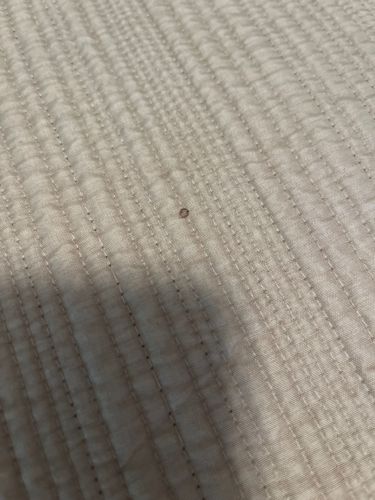Bed Bug (Likely a Nymph or recently fed adult)
Scientific Name: Cimex lectularius (Common Bed Bug) or Cimex hemipterus (Tropical Bed Bug)
Order & Family: Hemiptera (Order), Cimicidae (Family)
Size: Nymphs can be as small as 1-2 mm, while unfed adults are typically 4-5 mm long and oval-shaped. Fed adults are often engorged and reddish-brown, appearing slightly larger. The visible bug in the image appears to be a very small, roundish specimen, consistent with a nymph or a recently fed adult that has not yet elongated.

Natural Habitat
Primarily indoor environments where humans or other warm-blooded animals sleep or rest. Common hiding spots include mattresses, bed frames, headboards, cracks in walls, furniture, and electrical outlets.
Diet & Feeding
Strictly hematophagous, meaning they feed exclusively on the blood of warm-blooded animals, primarily humans.
Behavior Patterns
Bed bugs are nocturnal and feed on blood, typically at night when hosts are asleep. They are attracted to warmth and carbon dioxide. They hide in cracks and crevices during the day, such as mattress seams, bed frames, furniture, or walls. Females lay eggs in secluded spots, and nymphs go through several instars before maturing.
Risks & Benefits
Risks: Bed bugs can cause itchy red welts from bites, which can lead to secondary skin infections from scratching. Some individuals may experience allergic reactions. While they are not known to transmit diseases, their presence can cause significant psychological distress, anxiety, and sleep deprivation. Benefits: None known for humans or the ecosystem; they are considered pests.
Identified on: 8/11/2025